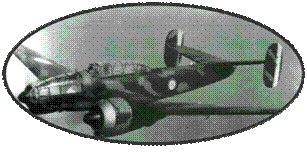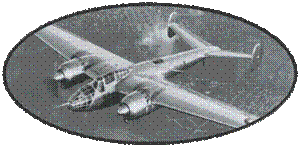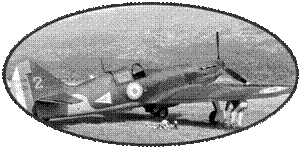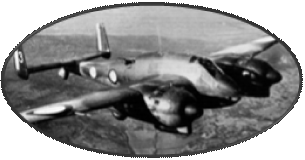The USSAC (U.S Army Air Corps)
ordered in 1936 266 copies of the BT-9 series. This aircraft, whose
first flight took place in April 1936, is intended to train American
pilots. It is a modern aircraft in metal structure covered with
canvas and metal. it has a fixed landing gear and is equipped with
a Wright E-975 engine of 400ch.
Soon, foreign countries are
interested in the aircraft. Thus France, in search of a modern machine
to train its pilots, will pass a first contract on February 15,
1939 concerning the purchase of 237 NA-57, derived from the American
BT-9B and 345 engines. 30 of these devices are intended for Naval
Aeronautics. From the summer of 1939, the appliances will be delivered
dismantled in the box, to be assembled in the factory SNCAO of Nantes.
40 copies will be mounted in Casablanca. In France, it takes the
NAA-57 designation with two variants: ET2 for the two-seater training
or P2 for two-seater improvement. Naval Aeronautics will only receive
its first aircraft in March 1940.
A second order was placed
in October 1939 for the acquisition of 230 NAA-64 and 275 engines.
These aircrafts are a more modern evolution of the NAA-57. Thus
the coating is entirely metallic and it receives a Pratt & Whitney
of 450ch. The drift is modified and adopts a triangular pattern
that will be found later on the T-6.
At the end of April 1940,
131 copies of NAA-57 were taken into account, distributed in schools
in metropolitan France (101 copies) and Morocco (30). In May, there
are 191 aircrafts, 127 of which are in schools. At the armistice,
222 copies had been received. Part will be used by the Vichy Air
Force as a liaison plane, and about fifty aircraft will be captured
by the Germans in November 1942 after the invasion of the Free Zone.
These will end up in flight school. There are still a hundred planes
in North Africa: they will be used until 1945 before being replaced
by more modern appliances
Of the 230 NAA-64 ordered,
only 111 will be received at the Armistice. Distributed in the Vichy
Air Force, the survivors will again be captured by the Germans in
November 1942 to serve as a flying school where they will be particularly
appreciated.
The rapid end of the fighting
will not allow the United States to deliver all the aircraft ordered.
The remainder of the order will be delivered to Canada which will
pay them in its schools of piloting where they will train in particular
the English pilots.
Despite the unfavorable course
of events, the French government had ordered in June 1940, 450 NA-76,
with retractable landing gear, very close to the T-6. All aircrafts
will be built, but will not be delivered. They will enter service
in the RAF under the name of Harvard II.













